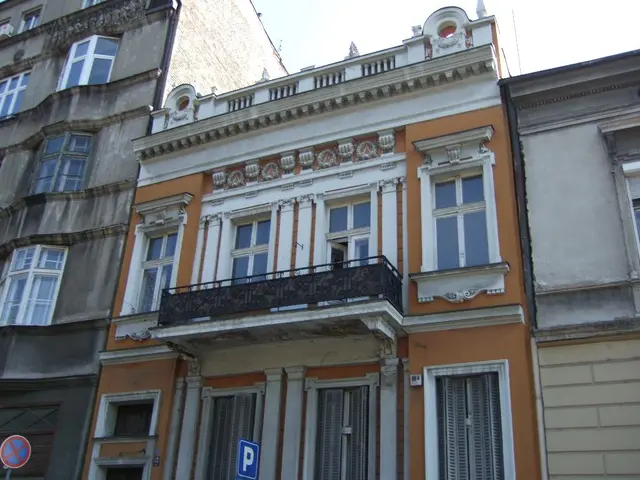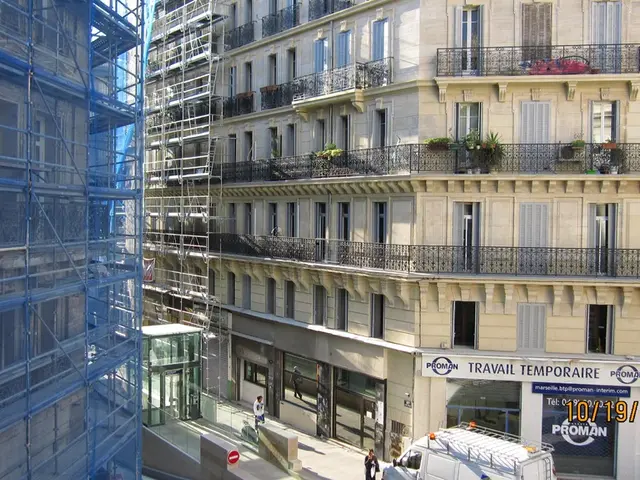Drop in House Prices Observed in April Amidst Stamp Duty Increase-Induced Housing Market Slump
In April 2025, the drops in house prices are on the horizon, mainly due to the rise in Stamp Duty dampening the property market, according to Nationwide Building Society. The average home declined in value by 0.6% in April, resulting in annual growth slowing to a mere 3.4%.
Robert Gardner, the chief economist at Nationwide, attributes the fall to the changes in Stamp Duty at the beginning of the month. He suggests that buyers rushed to finalize their purchases in March to avoid the additional tax obligations, leading to a significant increase in transactions.
With the shift in Stamp Duty thresholds, first-time buyers now pay duty if their home costs over £300,000, whereas prior to April 1, 2025, they paid only when the home cost over £425,000. This change means increased costs for many, as a purchase worth £425,000 now comes with a £6,205 stamp duty bill.
Adding to the downward pressure, there has been a glut of houses on the market. In the four weeks up to April 20, there were 12% more homes for sale than a year previously, according to Zoopla. This excessive inventory is creating a buyer's market in many desirable locations, offering buyers ample choices and negotiating power.
However, buyers appear to be hesitant rather than haggling, while sellers remain motivated. If interest rates were to fall modestly after turbulence in the economy, this could help put a floor under house prices and encourage modest increases. Major lenders have already started reducing mortgage rates in anticipation of interest rate cuts, with deals as low as 3.88% available for homebuyers.
Nevertheless, should inflationary pressures creep back into the system due to changes in employer taxes or renewed speculation leading to a slowing in the pace of rate cuts by the Bank of England, it could lead to a dwindling of buyer numbers after the summer. In this case, house prices might plummet further.
- The increase in Stamp Duty tariffs in April 2025 has led to a decrease in property values, with the average home showing a 0.6% decline in April.
- The shift in Stamp Duty thresholds has resulted in increased costs for first-time buyers, as they now pay duty for homes over £300,000, compared to the previous threshold of £425,000.
- The excess supply of properties on the market, as reported by Zoopla, is creating a buyer's market, offering buyers more choices and negotiating power.
- Despite the glut of homes and the drop in property values, buyers seem to be hesitant rather than actively negotiating, while sellers remain motivated.
- If interest rates were to fall modestly in the future, it could help stabilize house prices and encourage moderate increases. Major lenders have already begun reducing mortgage rates in anticipation of such a move.
- However, any potential inflationary pressures due to changes in employer taxes or a slowing down of interest rate cuts by the Bank of England could lead to a decrease in buyer numbers after the summer, potentially causing house prices to further decrease.









